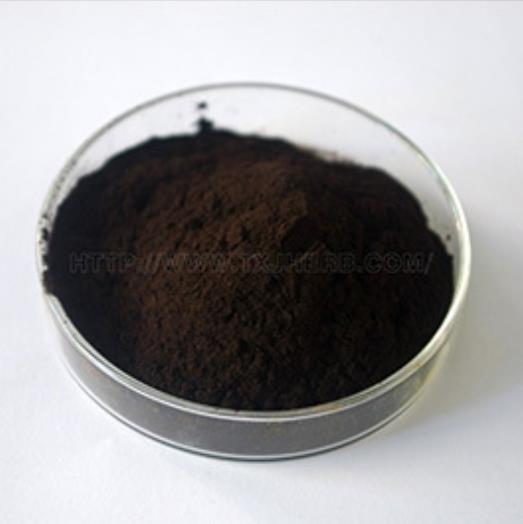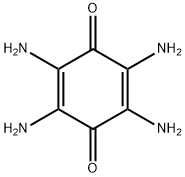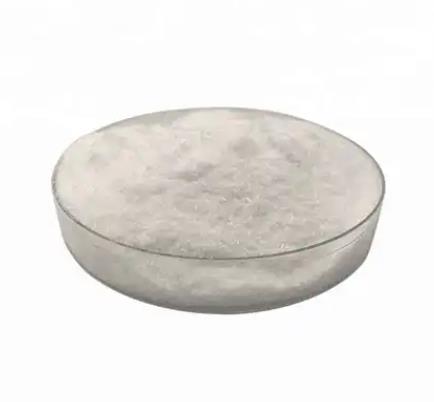Mechanism of action and application of 2,3,5,6-tetraaminocyclohexa-2,5-diene-1,4-dione
Introduction
2,3,5,6-Tetraaminocyclohexa-2,5-diene-1,4-dione is a compound that has garnered attention in the chemical community for its unique structure and potential applications. This chemical belongs to the cyclohexadiene family, where the molecule is characterized by a six-carbon ring incorporating two keto groups and multiple amine groups. Its discovery stems from efforts to explore novel organic compounds that offer versatile reactivity due to their rich amine and keto functionalities.
This compound's molecular architecture allows for a wide range of chemical reactions, making it a focal point for research in organic synthesis and materials science. The development of 2,3,5,6-tetraaminocyclohexa-2,5-diene-1,4-dione is a testament to the advancements in synthetic chemistry, where targeted modifications to molecular structures can lead to significant improvements in the properties and reactivities of the resultant materials[1].

Figure 1 Characteristics of 2,3,5,6-tetraaminocyclohexa-2,5-diene-1,4-dione
Mechanism of Action
The mechanism of action of 2,3,5,6-tetraaminocyclohexa-2,5-diene-1,4-dione is largely defined by its chemical structure. The presence of two opposed keto groups within a cyclohexadiene ring creates a highly reactive platform due to the inherent electronic and steric strains. These keto groups act as strong electrophilic centers, attracting nucleophilic species, which can lead to a variety of addition reactions[2].
Moreover, the tetraamine functionality introduces multiple sites for bonding and interaction with various chemical agents, further enhancing its utility as a versatile intermediate. The amine groups can undergo reactions such as alkylation, acylation, and condensation, providing pathways for the creation of complex molecules with potentially valuable properties. The interaction between the amine and keto groups also facilitates intramolecular and intermolecular bonding scenarios, which are crucial in polymer science and the design of functional materials.
Applications
2,3,5,6-Tetraaminocyclohexa-2,5-diene-1,4-dione finds its applications across a broad spectrum of chemical industries. In pharmaceuticals, this compound serves as a precursor in the synthesis of novel drugs, where its multifunctional nature enables the construction of complex architectures necessary for biological activity. Its ability to form stable yet reactive intermediates is highly valued in the development of therapeutic agents, particularly in the design of molecules with specific pharmacological targets.
In material science, the robust framework of 2,3,5,6-tetraaminocyclohexa-2,5-diene-1,4-dione allows for the development of advanced materials with desired mechanical and chemical properties. It is used in the creation of high-performance polymers and coatings, where the integration of amine and keto functionalities can lead to improved resistance to environmental degradation and enhanced structural integrity.
Moreover, its application in organic synthesis as a building block for complex molecular constructions showcases its utility in facilitating a range of synthetic strategies. This includes its role in catalysis, where it can act as a ligand or a catalyst itself, influencing reaction pathways to achieve higher selectivity and yield.
Storage Methods
The storage of 2,3,5,6-tetraaminocyclohexa-2,5-diene-1,4-dione requires careful consideration of its reactive nature. It should be stored in a cool, dry place away from direct sunlight to prevent degradation from heat and UV exposure. Optimal storage conditions include inert atmospheres, such as nitrogen or argon, to avoid reactions with atmospheric oxygen or moisture.
Containers made of materials that do not react with amines or ketones are preferred, such as glass or certain plastics. The compound should also be kept in tightly sealed containers to minimize air exposure, which can lead to oxidation or other degradation reactions. Compliance with safety regulations and proper labeling are critical to ensure safe handling and storage.
Conclusion
2,3,5,6-Tetraaminocyclohexa-2,5-diene-1,4-dione stands out as a versatile and potent chemical with far-reaching implications in multiple domains of chemistry. As research continues to unfold, its role in advancing both scientific understanding and industrial applications is anticipated to expand, underscoring the compound's importance in modern chemical synthesis and material innovation. Further exploration and utilization of this compound will undoubtedly yield new insights and breakthroughs in the chemical sciences.
References
[1] Beagan, Daniel M.; et al.Reductive Silylation Using a Bis-silylated Diaza-2,5-cyclohexadiene.Chemistry - A European Journal (2019), 25(34), 8105-8111.
[2] Liu, Yi; et al.Toward Benzobis(thiadiazole)-based Diradicaloids.Chemistry - An Asian Journal (2017), 12(17), 2177-2182.



